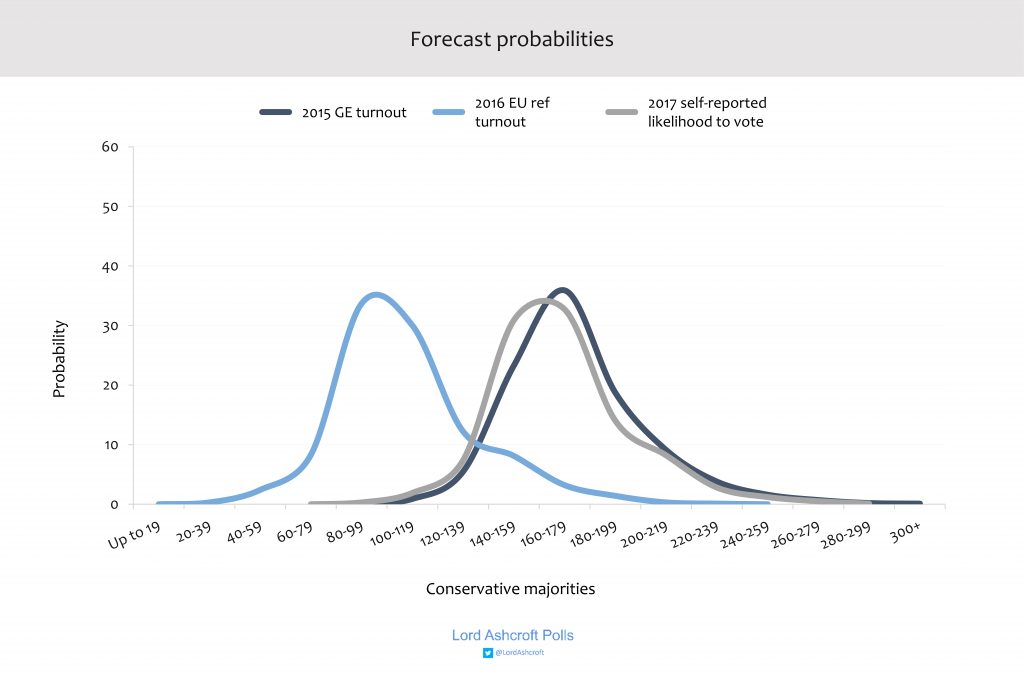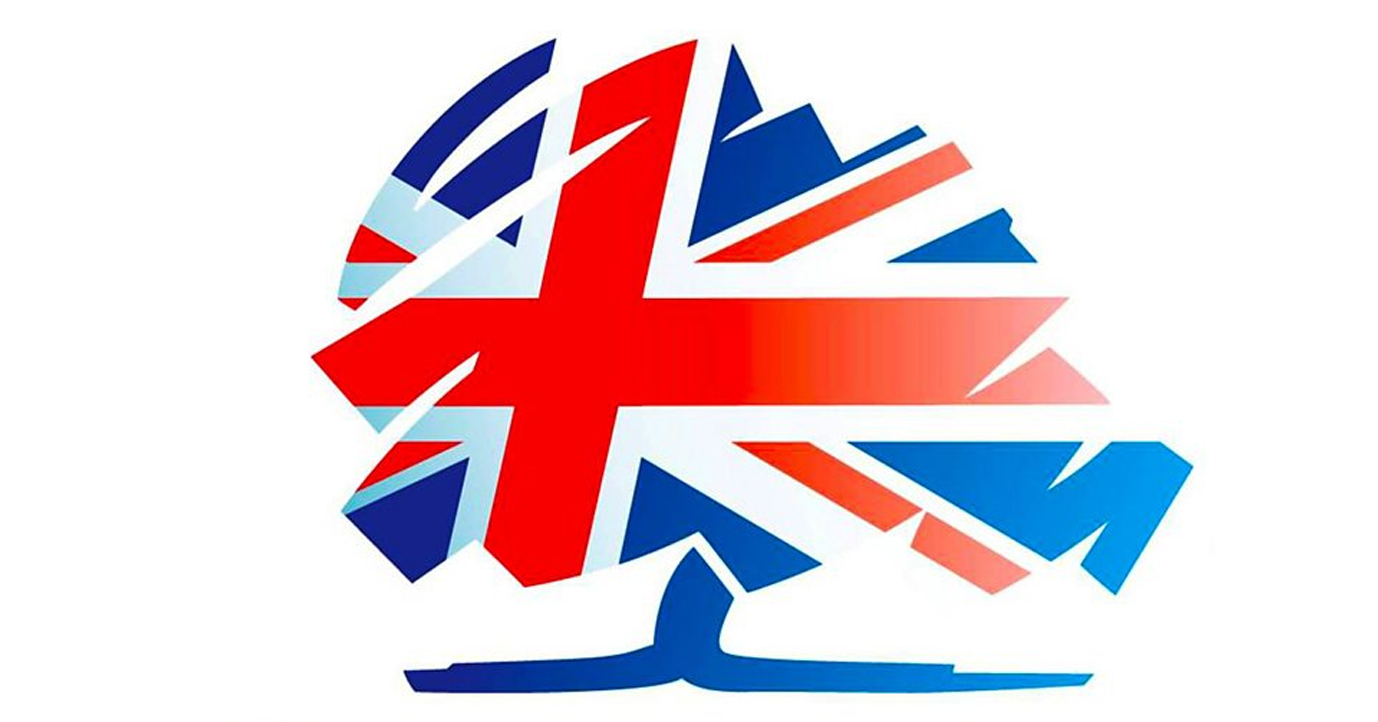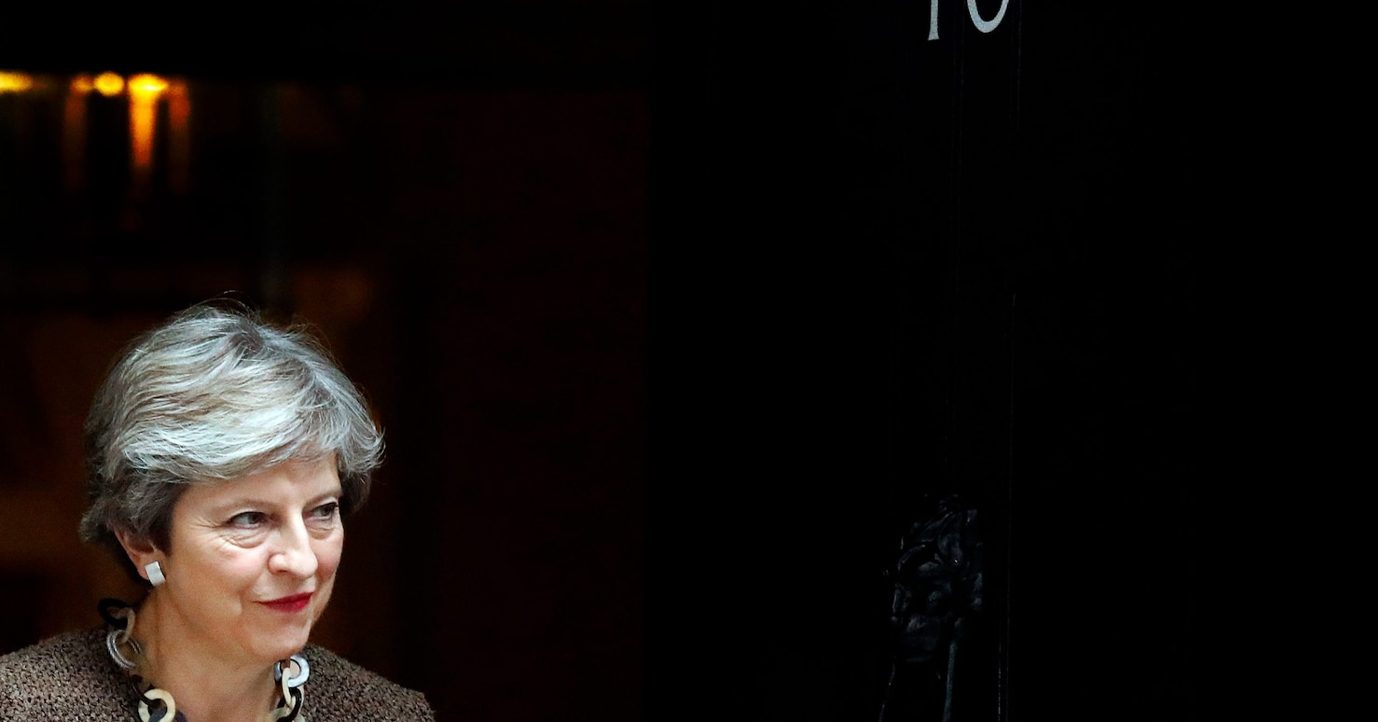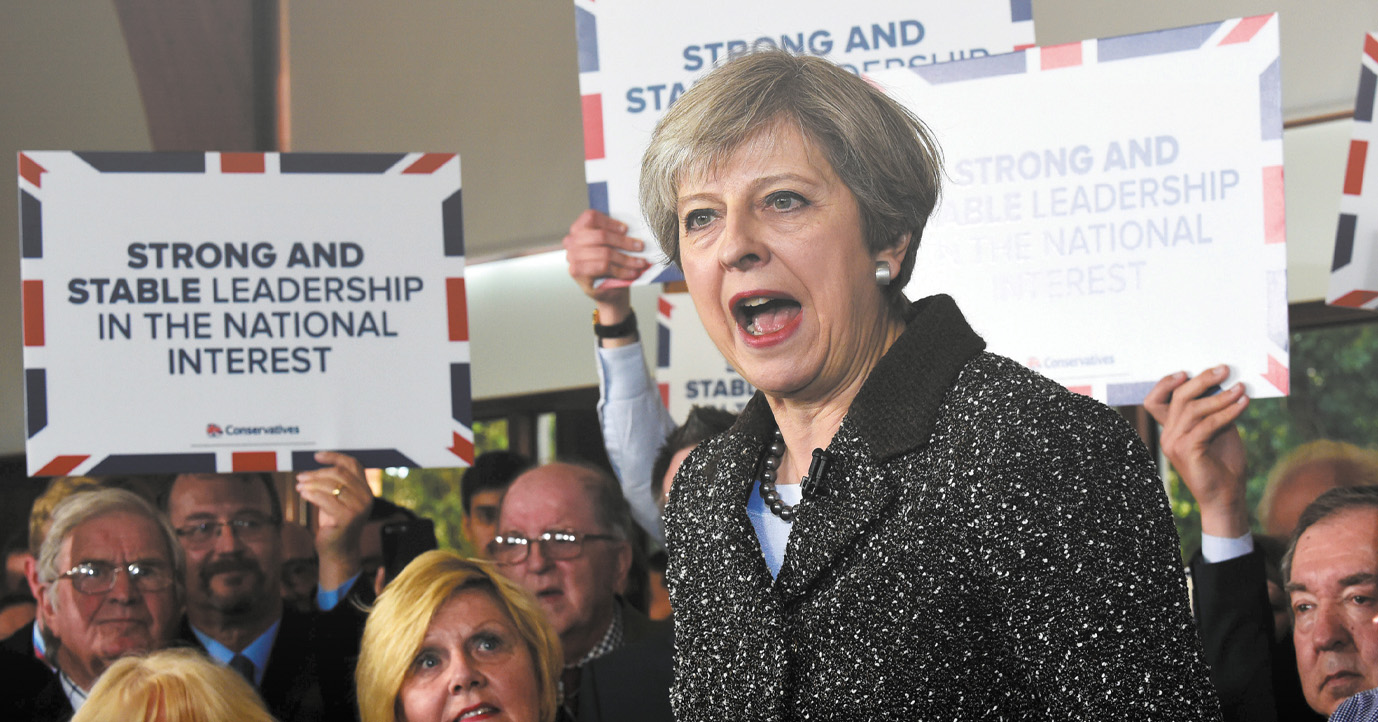
This week we have added a new feature to the Ashcroft Model dashboard. The constituency-by-constituency pages now show estimated current vote shares for each seat in three different scenarios: according to turnout in the 2015 general election; including those who say they voted in the EU referendum; and including those who say they will vote in June.
Alongside these estimated vote shares, the model also shows the leading party’s “win chance” in that seat. In calculating the win chance, the model takes into account data from several previous general elections to transform the estimated gap in vote share – between the first and second-placed parties in two-way contests, or the top three in three-way contests – into probabilities. For example, a seat where one party has a very small lead in vote share would become a seat where the two parties’ win chances are almost equal. And since the particular circumstances and history of the seat are factored into the calculation, a party may have a different win chance in two seats where it has the same estimated lead in vote share.
We then calculate the total number of seats each party could win by looking at the sum of each party’s win chances across all the seats in which it is standing. Based on an update survey conducted at the height of the “dementia tax” controversy following the Conservative manifesto launch, the combined probabilities currently give the Tories a total of 396 seats (down from 406 last week), or an implied potential majority of 142.
As I explained when I launched the Ashcroft Model two weeks ago, we are dealing with probabilities not predictions. The model allows us to see the likelihood of different outcomes in each turnout scenario, as shown in the graph below. If turnout next month matches that of the last general election, there is currently a 23% chance of the Tories winning a majority between 140 and 159, a 36% chance of a majority between 160 and 179, and a 19% chance of a majority of 180 to 199. If we base the model on all those who say they voted in the EU referendum – which includes greater numbers of demographic types who incline more towards Labour – the biggest probability (34%) is of a majority between 80 and 99.
There are two weeks left in the campaign, and two more updates to the Ashcroft Model to come. Meanwhile, why not explore the seat-by-seat data here.



